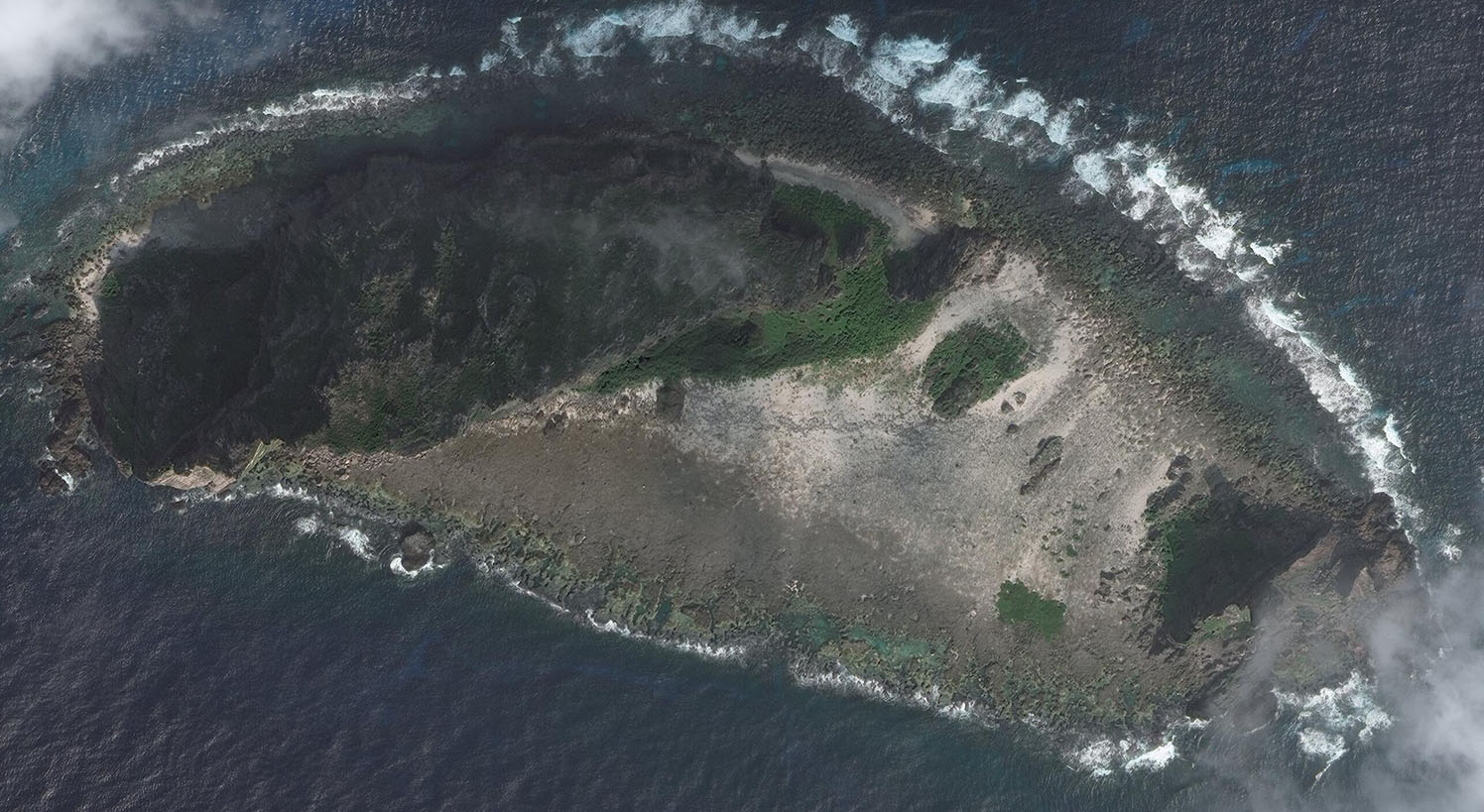A slow-moving crisis continues to unfold in the East China Sea, focused on the disputed Senkaku Islands, called Diaoyu in China (see satellite images at bottom), and on competition for seabed resources. With each passing year, the frequency of dangerous interactions between the two sides’ maritime and air forces grows. It is an incremental game of chicken, in which Beijing adds pressure bit by bit on Japan’s administrative control of waters and airspace over the East China Sea, while Tokyo remains determined not to cede that control.
An accidental collision could quickly spiral into a crisis. And even though both sides continue to use coast guard vessels as the primary actors around the Senkakus, Japan finds itself at a greater disadvantage year-by-year. Sooner or later, the law enforcement standoff over administrative control of the waters around the islands is likely to evolve into a naval standoff. As a result, China is not the only one seeking to change the game. In the face of steadily increasing Chinese pressure, Japan is taking steps to bolster its defense and coast guard capabilities in the Southwest Islands—those territories nearest to the Senkakus.
Tokyo does not release complete details on its forces in the Southwest Islands, but news reports and government documents provide a good overview of major existing facilities and planned upgrades. As expected, those facilities are geared toward island defense, air, naval, and coast guard capabilities, radar and signals intelligence, and air and missile defense.
- Yonaguni
- Japan Ground Self-Defense Forces (JGSDF) Coastal Observation Unit consisting of 160 personnel set up in March 2016
- Radar sites at Kubura and Sonai monitor aircraft and ships near Senkakus
- Ishigaki
- Japan Coast Guard (JCG) office and air station, including 600 personnel and 10 1,500-ton patrol vessels.
- Plans to deploy 500-600 JGSDF personnel.
- Plans for anti-ship missiles and surface-to-air missile batteries.
- Miyako
- JCG office.
- Japan Air Self-Defense Force (JASDF) radar station and electronic intelligence (ELINT) facility.
- Plans to add ballistic missile defense functions to existing J/FPS-7 radar under FY2017 budget.
- Plans to deploy 700-800 JGSDF personnel.
- Plans for anti-ship missiles and surface-to-air missile batteries.
- Kume
- JASDF bases and air-defense radar site.
- Okinawa
- JCG regional headquarters at Naha, including 1,700 personnel, 6 1,000-ton or larger patrol ships, and 2 helicopter-equipped patrol vessels.
- JCG station at Nago and office at Nakagusuku.
- Japan Maritime Self-Defense Forces (JMSDF) Okinawa Naval Base, adjacent to U.S. White Beach Naval Facility at Uruma.
- Naha Air Base, with 4 JASDF E-2C Hawkeye airborne early warning aircraft, 40 F-15J Eagle fighter jets (doubled from 20 in January 2016), and JMSDF patrol aircraft including P-3C Orions.
- JASDF bases at Onna, Chinen, and Yozadake; the latter includes a J/FPS-5 radar station for ballistic missile defense.
- Surface-to-air missile batteries in southern Okinawa.
- PAC-3 battery.
- Okinoerabu
- JASDF bases and air-defense radar site.
- Plans to add ballistic missile defense functions to existing J/FPS-7 radars under FY2017 budget.
- Amamioshima
- JASDF bases.
- Plans to deploy 550 JGSDF personnel.
- Plans for anti-ship missiles and surface-to-air missile batteries.
- Plans for a mobile warning and control radar deployment site in FY2017 budget.
China continues to test Japanese administrative control of the waters around the Senkakus with regular patrols. China has established a pattern of regular patrols, with the total number of Chinese government vessels entering the territorial sea around the islands remaining relatively steady at 7 to 12 per month. This is down considerably from a high of 28 in August 2013. The pattern has been broken only once, in August 2016, when 23 Chinese government ships entered the territorial sea, sometimes repeatedly, as they accompanied a fishing fleet of hundreds to the islands. The arrival of that fleet coincided with the lifting of China’s fishing ban in the East China Sea, which runs from May to August each year.
Despite the illusion of a stable new status quo, AMTI has previously documented that the Chinese ships entering Japanese-claimed waters are growing larger and better-armed month by month. Since the August 2016 incident, Chinese government vessels have also reportedly begun to linger in the waters around the Senkakus longer during each trip, further challenging Japan’s administration. China’s annual fishing ban begins again on May 1, and there is reason to worry that its expiration in August will bring another large Chinese fishing fleet to the Senkakus, and with it another excuse for China to test Japanese determination.
Japan is also scrambling its fighters with unprecedented frequency in response to intrusions into its air defense identification zone (ADIZ) by both Russian bombers from the north and Chinese combat aircraft in the south. In FY2016, the JASDF scrambled jets 301 times against Russian aircraft and a whopping 851 times against Chinese combat aircraft. The overall scramble count of 1,152 is an all-time high for the JASDF, beating the previous record of 937 set in 2014 (which beat a Cold War record set in 1984). This worrying trend is overwhelmingly driven by Chinese activities over the East China Sea. The number of scrambles against Russian aircraft rose slightly from 288 in FY2015, but remained well below the 2014 figure of 464. Scrambles against Chinese planes, on the other hand, jumped precipitously from 571 in FY2015 and have risen steadily year-by-year, from just 96 in 2010.
This trend of rising Chinese incursions in the Japanese ADIZ and corresponding scrambles by the JASDF should be deeply worrying. Too often these incidents have resulted in dangerously close approaches, such as two instances between Chinese Su-27 fighters and Japanese military aircraft in 2014. Every such encounter presents a chance for miscalculation which could result in tragedy. Given steadily building tensions in the East China Sea and low trust between Beijing and Tokyo, an accidental mid-air collision could spark a crisis that would prove difficult to manage.
Senkaku Islands Gallery









